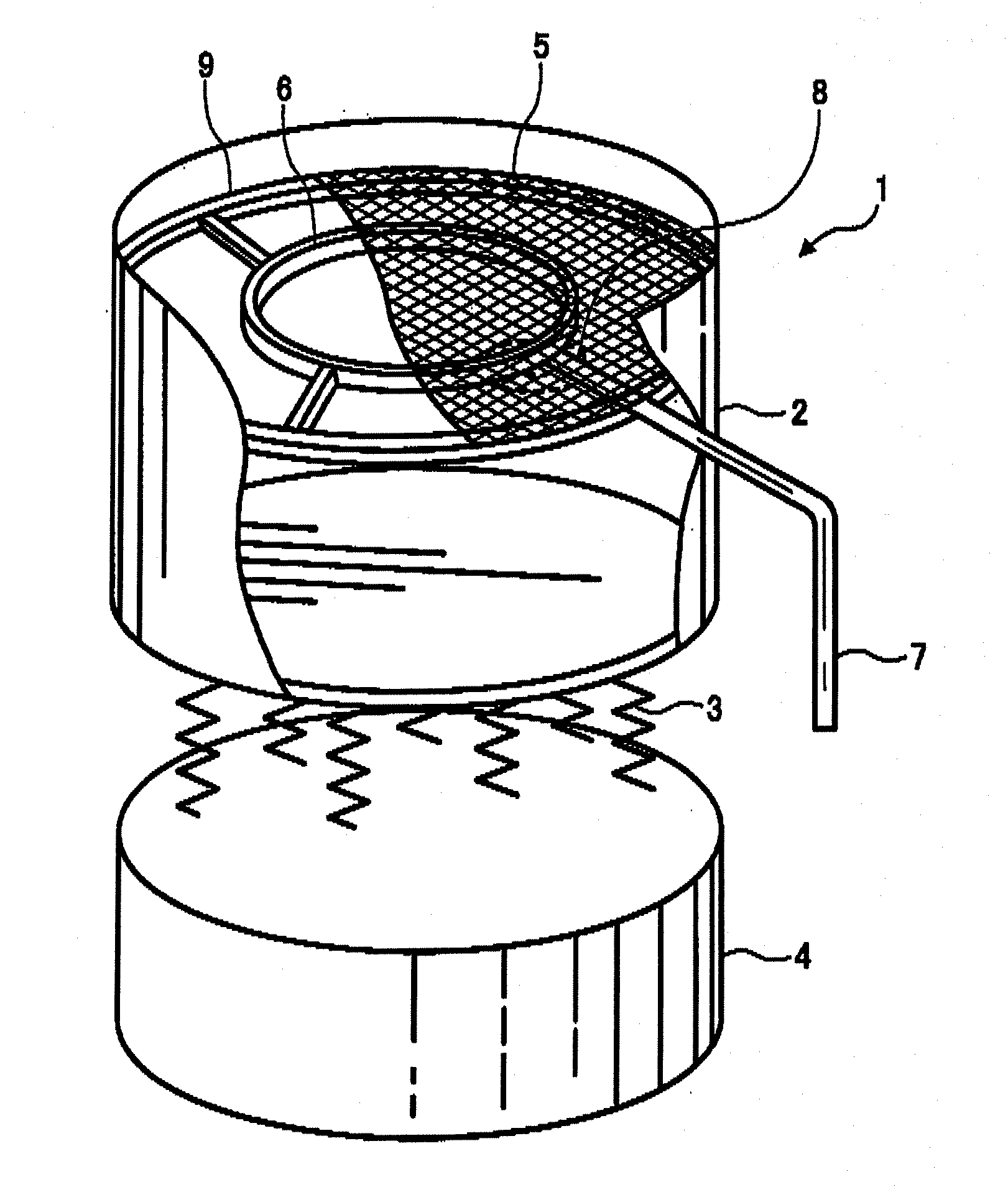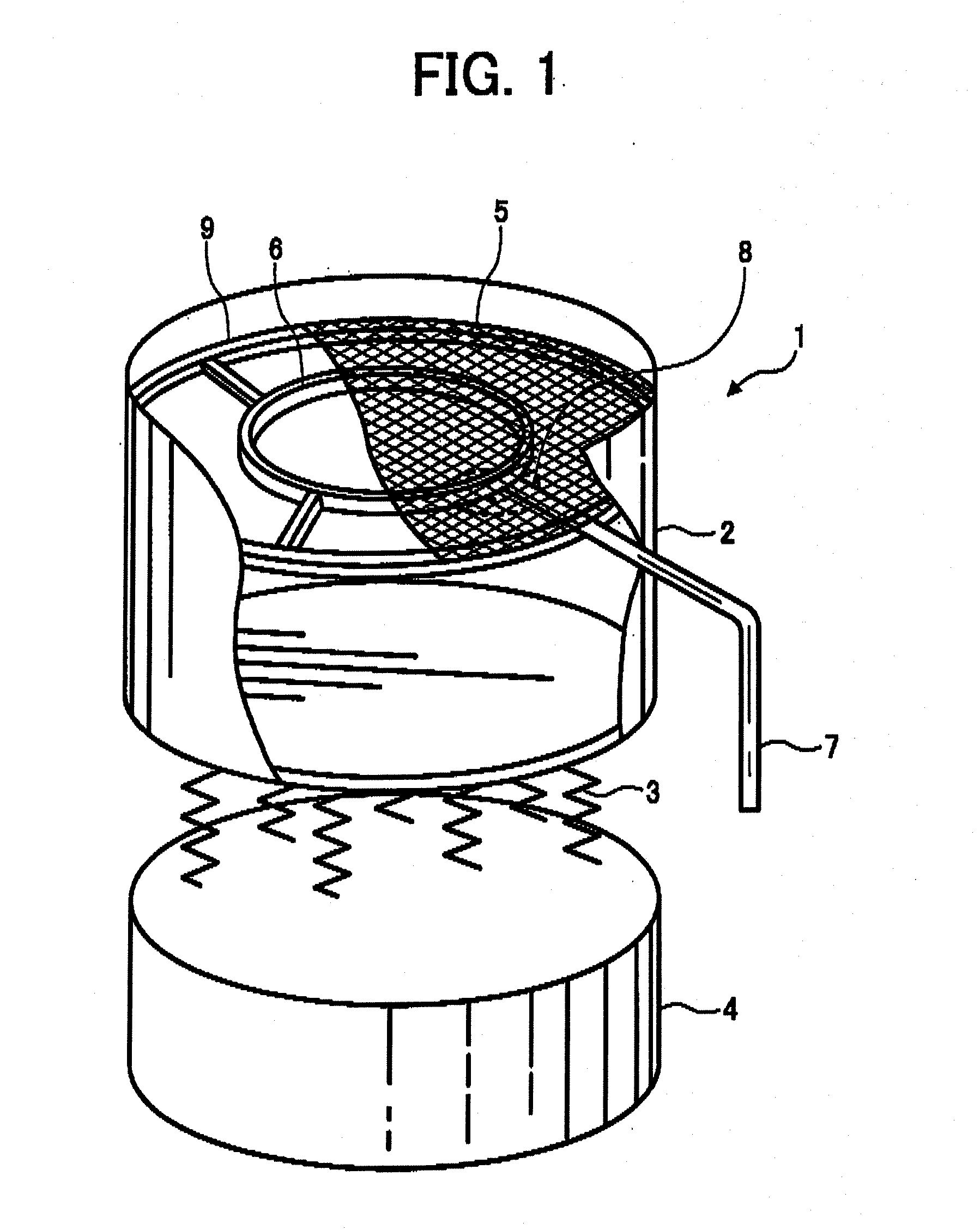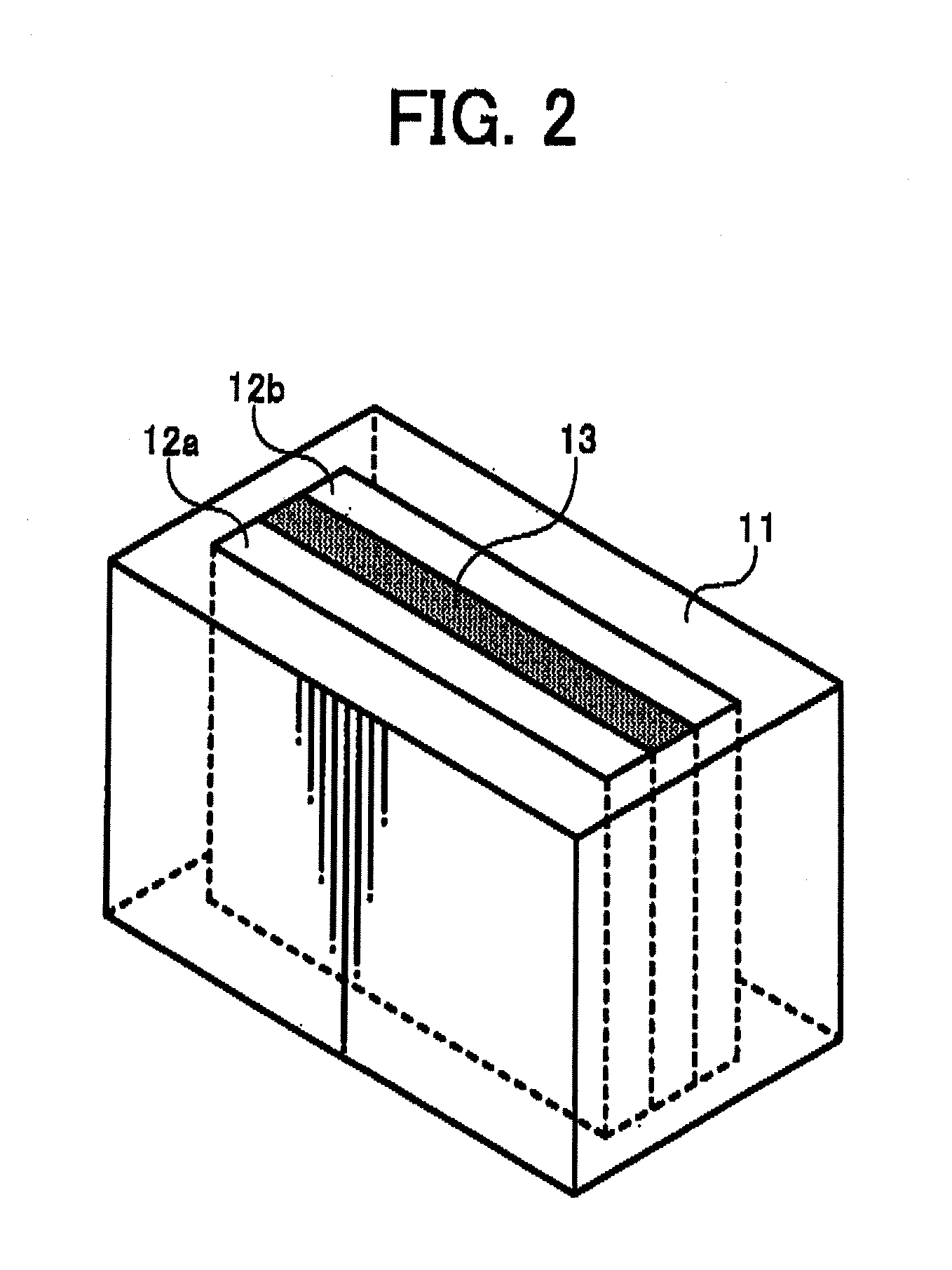Electrophotographic developing carrier, associated apparatus and methodology of classification and application
a developing carrier and a technology of electrophotography, applied in electrography/magnetography, instruments, solid separation, etc., can solve the problems of low reliability of developing carriers, high cost and low reliability of these methods, and still have to be improved, so as to achieve low cost, high quality images, and small particle diameter
- Summary
- Abstract
- Description
- Claims
- Application Information
AI Technical Summary
Benefits of technology
Problems solved by technology
Method used
Image
Examples
preparation example 1
Carrier Preparation Example 1
[0109] In silicone resin (SR2411 from Dow Corning Toray Silicone Co., Ltd., of Chiyoda-ku, Tokyo, Japan), carbon (KETJENBLACK EC-600JD from Lion Corp., of Sumida-ku, Tokyo, Japan) of 7% per 100% of a solid content of the silicone resin was dispersed for 60 min by a ball mill. The dispersion was diluted to prepare a dispersion having a solid content of 5%.
[0110] Further, an amino silane coupling agent (NH2(CH2)3Si(OCH3)) of 3% per 100% of the solid content of the silicone resin was mixed with the dispersion to prepare a dispersion.
[0111] The dispersion was coated on 5 kgs of a carrier core material I in Table 1 by a fluidized bed coater at 30 g / min in an atmosphere of 100° C., and was further heated at 200° C. for 2 hrs to prepare a resin-coated carrier A having a resin layer thickness of 0.31 μm. The resin layer thickness was controlled by an amount of the coating liquid, i.e., the dispersion.
[0112] The particle diameter distribution of the carrier A ...
preparation example 2
Carrier Preparation Example 2
[0113] The carrier core material I in Table 1 was fed onto a stainless mesh at 0.5 Kgs / min to classify the carrier core material I.
[0114] A vibrating sieve used has a constitution in FIG. 1 and is a sieving apparatus 1, wherein a resonant ring 6 having a transducer 8 generating an ultrasonic wave having a frequency of 36 kHz as a resonant member is directly contacts a stainless mesh 5 (635 mesh / single) having a diameter of 70 cm, supported by a frame 9.
[0115] The stainless mesh 5 is located in a cylindrical container 2 supported by a base 4 through a spring 3. A vibration motor (not shown) is located in the base 4, which transmits a high-frequency current to the transducer 8 installed at the resonant ring 6 through a cable 7 to generate the ultrasonic wave.
[0116] The resonant ring 6 is vibrated by the ultrasonic wave, which vertically vibrates the whole mesh 5. The carrier core material fed onto the stainless mesh 5 in the cylindrical container 2 is s...
preparation example 3
Carrier Preparation Example 3
[0124] In the vibrating sieve in FIG. 1, a stainless mesh having openings of 104 μm (150 mesh) was located underneath, and a nylon mesh having openings of 20 μm was closely layered thereon. A material (nylon-66) used for the nylon mesh has a flexural modulus of 2.8 Gpa.
[0125] The stainless mesh underneath directly receives a vibration from the ultrasonic transducer, and the ultrasonic vibration is efficiently transmitted to the nylon mesh closely located thereon and the nylon mesh classifies the particles.
[0126] The carrier core material I in Table 1 was fed onto the nylon mesh at 0.5 Kgs / min to classify the carrier core material I using the vibration sieve just as classified in Carrier Preparation Example 2 to prepare a carrier core material III.
[0127] As a result of the classification, a ratio of the carrier core material having a particle diameter less than 22 μm could largely be reduced. The particle diameter distribution the carrier core material...
PUM
 Login to View More
Login to View More Abstract
Description
Claims
Application Information
 Login to View More
Login to View More - R&D
- Intellectual Property
- Life Sciences
- Materials
- Tech Scout
- Unparalleled Data Quality
- Higher Quality Content
- 60% Fewer Hallucinations
Browse by: Latest US Patents, China's latest patents, Technical Efficacy Thesaurus, Application Domain, Technology Topic, Popular Technical Reports.
© 2025 PatSnap. All rights reserved.Legal|Privacy policy|Modern Slavery Act Transparency Statement|Sitemap|About US| Contact US: help@patsnap.com



